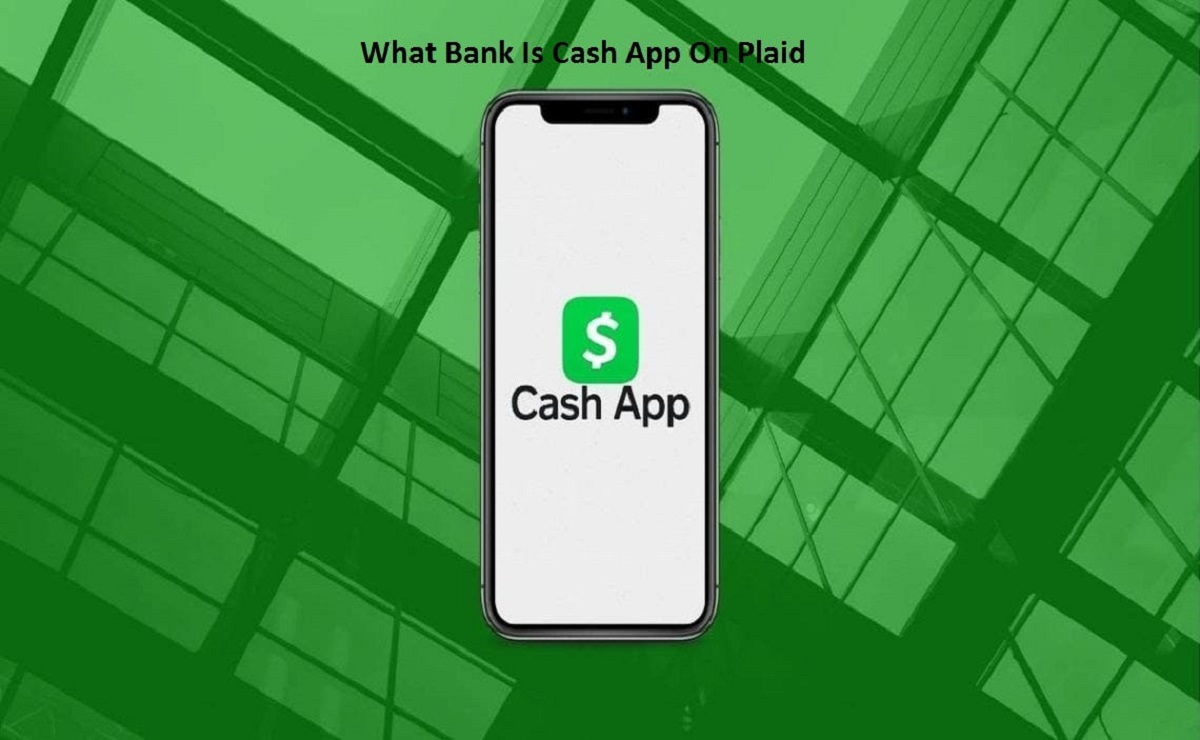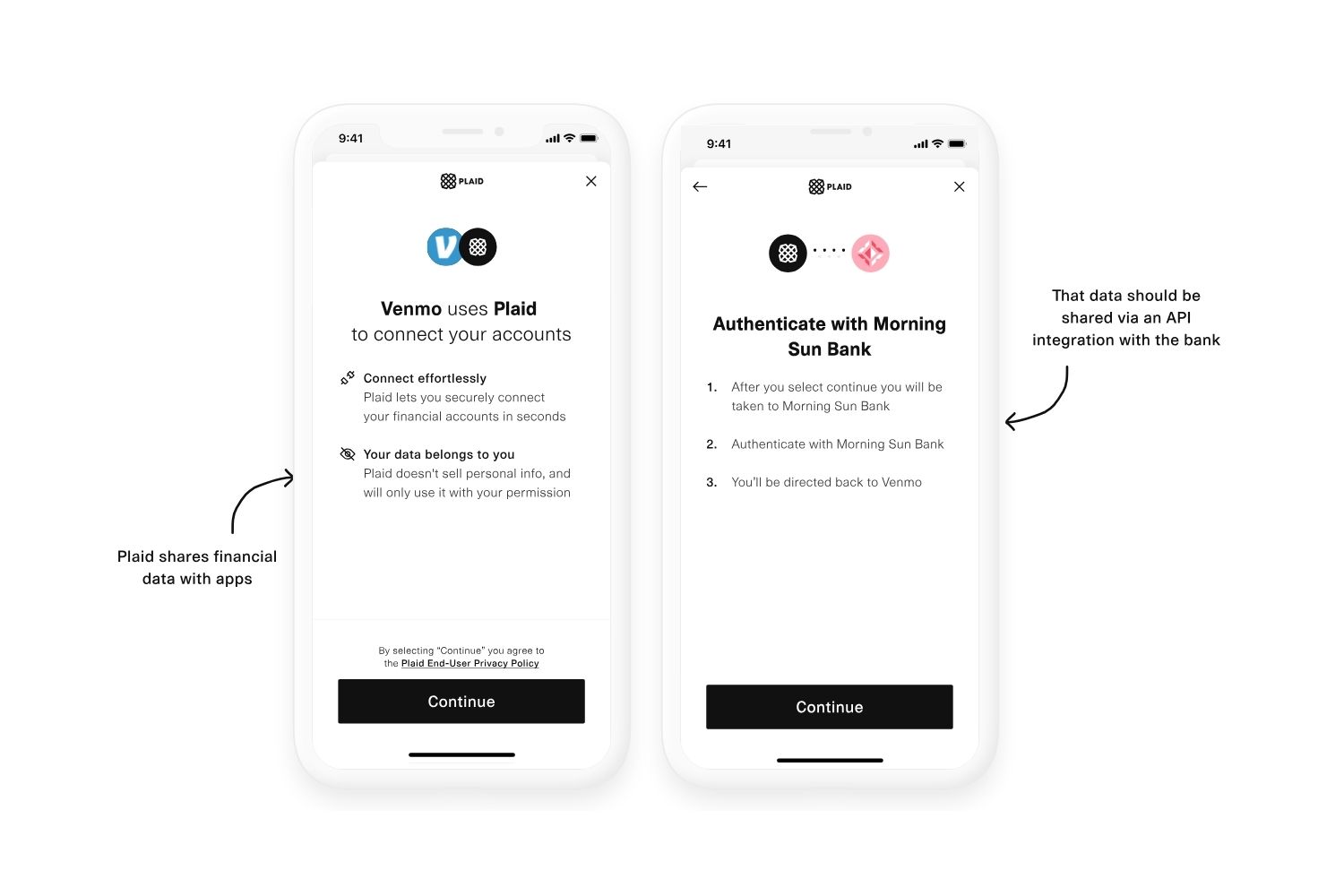Introduction
Plaid has emerged as a leading technology platform for enabling seamless integration between financial institutions and third-party applications. With its robust APIs and secure infrastructure, Plaid has revolutionized the way banking applications access user financial data, simplifying the process and improving user experience.
Plaid was founded in 2013 by Zach Perret and William Hockey with the vision of creating a more connected and user-friendly financial ecosystem. The company quickly garnered attention and funding, attracting investors like Andreessen Horowitz and Visa. Today, Plaid powers thousands of applications in the fintech space, including popular services like Venmo, Acorns, and Coinbase.
At its core, Plaid works by connecting to various financial institutions, allowing users to securely link their bank accounts, credit cards, and other financial data to third-party applications. Through Plaid’s secure infrastructure, developers can access and leverage this data for a myriad of financial services and applications, from budgeting to investing.
One of the key features that sets Plaid apart is its ability to simplify the authentication and data retrieval process. Traditionally, integrating with financial institutions required developers to navigate complex and time-consuming APIs. Plaid, on the other hand, provides a unified and standardized interface, making it easier for developers to access and work with financial data across multiple institutions.
Plaid offers a range of features that make it an attractive choice for developers and financial institutions alike. These include real-time transaction data, account verification, balance checks, identity verification, and more. By providing a comprehensive suite of tools, Plaid enables developers to create innovative solutions that enhance the user experience and simplify financial workflows.
In the following sections, we will explore the various features and benefits of Plaid for banking applications, as well as some of the common use cases, limitations, and alternatives to consider. So, let’s dive into the world of Plaid and discover how it is transforming the way we interact with financial data.
History of Plaid
Plaid is a fintech company that was founded in 2013 by Zach Perret and William Hockey. The idea for Plaid originated from their personal frustration while trying to build a payment app, where they experienced the complexity and lack of accessibility of banking data. Determined to solve this issue, they set out to create a platform that would enable developers to easily access and utilize financial data.
In its early days, Plaid primarily focused on creating a solution to streamline the authentication and data retrieval process for developers. They recognized that each financial institution had its own unique API, making it challenging for developers to integrate with multiple institutions. Plaid aimed to simplify this process by providing a unified API that could connect to various financial institutions, translating the different data formats into a standardized format.
Their vision struck a chord with investors, leading to successful funding rounds. In 2013, Plaid raised $2.8 million in seed funding from investors including Spark Capital and Google Ventures. This initial funding allowed Plaid to further develop its platform and expand its offerings.
Over the years, Plaid has continued to grow and evolve. In 2015, Plaid introduced its first major product, Plaid Connect, which enabled developers to securely link bank accounts to their applications. This product quickly gained popularity among fintech startups and other financial services providers, cementing Plaid as a go-to solution for banking integration.
In 2018, Plaid made headlines when it announced a strategic partnership with Visa. This partnership not only provided Plaid with additional resources and support but also validated its position as a leader in the fintech industry. The partnership also allowed Plaid to expand its services globally, enabling developers around the world to access and leverage financial data.
Today, Plaid powers thousands of applications across various industries, including personal finance management, investment platforms, lending services, and more. Its user-friendly interface and robust data infrastructure have made it a trusted choice for both developers and financial institutions.
As Plaid continues to innovate and enhance its offerings, it remains committed to its mission of enabling financial access and empowering developers to build innovative financial products. With its solid foundation and strategic partnerships, Plaid is well-positioned to shape the future of banking integration and transform the way we interact with financial data.
How Plaid Works
Plaid provides a seamless and secure way for developers to connect their applications with users’ financial accounts. The integration process involves several key steps that ensure data privacy and accessibility.
1. User Authorization: When a user decides to link their financial accounts to an application powered by Plaid, they are prompted to provide their login credentials for the respective financial institution. Plaid uses bank-grade security measures, including encryption and tokenization, to protect these credentials.
2. Data Retrieval: Once the user has authorized access to their financial accounts, Plaid acts as an intermediary between the application and the financial institution. Plaid securely connects to the institution’s API and retrieves the relevant data, such as account balances, transaction history, and other account details.
3. Data Standardization: Plaid normalizes the data received from different financial institutions and presents it in a standardized format, making it easier for developers to work with. This eliminates the need for developers to navigate the unique APIs of each institution and simplifies the integration process.
4. Webhooks and Real-Time Updates: Plaid offers webhooks, which allow developers to receive real-time updates whenever there are changes to a user’s financial data. This enables applications to provide users with up-to-date information and notifications regarding their accounts.
5. Account Verification: Plaid offers account verification services to ensure the authenticity of the linked financial accounts. This helps mitigate the risk of fraudulent activity and ensures that the application is working with accurate and verified account information.
6. Secure Data Transmission: Plaid uses industry-standard encryption protocols to secure the transmission of data between financial institutions, Plaid’s servers, and the applications integrating with Plaid. This ensures that sensitive financial information remains protected throughout the integration process.
Overall, Plaid’s infrastructure and APIs simplify the integration between applications and financial institutions, allowing developers to focus on building innovative financial products and services. By handling the complexities of data retrieval, standardization, and security, Plaid enables developers to create seamless and personalized banking experiences for their users.
It is important to note that Plaid operates within the regulatory frameworks and security guidelines set forth by financial institutions and governing bodies, ensuring compliance and data privacy. This commitment to security and user privacy has been instrumental in establishing Plaid as a trusted and reliable platform for banking integration.
Features of Plaid
Plaid offers a wide range of features that make it a powerful platform for banking integration. These features enable developers to create innovative financial applications while providing users with a seamless and secure experience. Here are some of the key features of Plaid:
1. Data Access: Plaid allows developers to securely access and retrieve user financial data from various sources, including bank accounts, credit cards, and other financial institutions. This data includes transaction history, account balances, and other account details.
2. Multi-Institution Support: Plaid supports integration with thousands of financial institutions, making it easy for developers to connect their applications with users’ accounts regardless of where they bank. Whether it’s a large national bank or a local credit union, Plaid provides access to a wide range of institutions.
3. Transaction Categorization: Plaid automatically categorizes transactions, making it easier for developers to analyze and present financial data to users. This feature allows applications to provide insights into spending habits, budgeting, and financial management.
4. Identity Verification: Plaid offers identity verification services, allowing developers to verify users’ identities by cross-referencing the information provided with their financial accounts. This helps mitigate the risk of fraud and ensures a secure user experience.
5. Account Verification: Plaid provides tools for developers to verify account ownership and authenticity. This feature is particularly useful in building applications that require verified financial data, such as lending platforms or investment services.
6. Real-Time Data Updates: Plaid offers webhooks, enabling developers to receive real-time updates whenever there are changes to a user’s financial data. This allows applications to provide users with up-to-date information and notifications, enhancing the user experience.
7. Developer-Friendly API: Plaid’s API is designed with developers in mind, offering comprehensive documentation, SDKs, and code samples that make integration quick and easy. The API provides well-structured endpoints and a streamlined process for accessing and managing financial data.
8. Compliance and Security: Plaid takes data privacy and security seriously, adhering to industry best practices and regulatory requirements. They implement advanced encryption, authentication, and security protocols to ensure the secure transmission and storage of sensitive financial information.
These features make Plaid a versatile and powerful tool for developers looking to build applications that leverage financial data. By providing access to comprehensive and standardized financial data, Plaid empowers developers to create innovative solutions that enhance financial management, budgeting, investing, and more.
Developers can leverage Plaid’s features to build user-friendly applications that provide insights, automate financial processes, and simplify banking interactions. With its multitude of features and developer-friendly infrastructure, Plaid enables applications to deliver a seamless and personalized banking experience to their users.
Benefits of Plaid for Banking Applications
Utilizing Plaid for banking applications offers several key benefits for both developers and financial institutions. Let’s explore some of the advantages that Plaid brings to the table:
1. Streamlined Integration: Plaid simplifies the integration process by providing a unified API that connects with multiple financial institutions. Instead of dealing with the complexities of each institution’s unique API, developers can rely on Plaid’s standardized interface to seamlessly integrate banking functionality into their applications, saving valuable development time and resources.
2. Enhanced User Experience: Plaid enables developers to deliver a seamless and user-friendly banking experience. By leveraging Plaid’s features, developers can provide users with real-time access to their financial data, personalized insights, and transaction categorization. This enhances the overall user experience, promoting engagement and increasing user satisfaction.
3. Access to Comprehensive Financial Data: Plaid gives developers access to a wide range of financial data, including transaction history, account balances, and more. By leveraging this comprehensive financial data, developers can build applications that provide valuable insights into spending habits, budgeting, and financial planning. This, in turn, empowers users to make more informed financial decisions.
4. Speed and Efficiency: Plaid’s infrastructure and APIs facilitate real-time data retrieval and updates, enabling applications to provide users with the most up-to-date financial information. Whether it’s monitoring account balances, tracking transactions, or receiving notifications, Plaid ensures that users have access to current and accurate data, enhancing their financial management capabilities.
5. Security and Compliance: Plaid prioritizes the security and privacy of user financial data. By adhering to industry best practices and regulatory standards, Plaid offers a secure environment for data transmission and storage. This gives users peace of mind and instills trust in the application, leading to increased user adoption and loyalty.
6. Scalability: Plaid’s infrastructure is designed to handle a large volume of data requests, making it suitable for both small-scale applications and enterprise-level solutions. As the application grows, Plaid can easily accommodate increasing data demands without compromising performance or reliability.
7. Developer-Focused Tools and Support: Plaid offers comprehensive documentation, developer resources, and customer support, making it easy for developers to integrate and troubleshoot any issues. With their developer-friendly tools and active community, Plaid supports developers in building robust and innovative banking applications.
By leveraging the benefits of Plaid, banking applications can provide users with a seamless and secure banking experience, enhance their financial management capabilities, and foster trust and engagement. Whether it’s a personal finance app, investment platform, or lending service, Plaid empowers developers to create innovative solutions that meet the evolving needs of users in today’s digital banking landscape.
Common Use Cases for Plaid in Banking
Plaid offers a wide range of use cases for integration in banking applications. Here are some common scenarios where Plaid is leveraged to enhance the functionality and user experience of banking applications:
1. Personal Finance Management: Plaid allows developers to build personal finance applications that provide users with a holistic view of their financial accounts. By securely linking bank accounts, credit cards, and other financial data, users can track their expenses, categorize transactions, set budgets, and receive personalized insights into their financial health.
2. Budgeting Applications: With Plaid, developers can create budgeting apps that automate the process of tracking income, expenses, and savings. Plaid’s real-time data updates enable users to monitor their spending against budget goals, helping them make informed financial decisions and meet their financial objectives.
3. Investment Platforms: Plaid enables developers to build investment applications that seamlessly connect users’ bank accounts to investment portfolios. This allows users to initiate transfers, monitor transactions, and receive real-time updates on their investment performance, making investing more accessible and convenient.
4. Lending Services: Plaid’s account verification and transaction history features are valuable for lending platforms. By integrating Plaid, developers can streamline the loan application process, verify borrowers’ financial information, and assess creditworthiness based on real-time data.
5. Payment Applications: Plaid simplifies the payment experience by securely linking bank accounts to payment apps. Users can easily transfer funds, make peer-to-peer payments, and securely store payment methods, all within the app. Plaid’s real-time data updates ensure that users have an accurate view of their account balances and transaction history.
6. Identity Verification: Plaid offers identity verification services that can be leveraged in banking applications to verify users’ identities and prevent fraud. This is particularly useful in applications that require robust user authentication or comply with Know Your Customer (KYC) regulations.
7. Neobanks and Challenger Banks: Plaid plays a crucial role in the success of neobanks and challenger banks by providing seamless integration with users’ existing bank accounts. By leveraging Plaid, these innovative banking solutions can offer a unified dashboard that aggregates financial information from multiple accounts into a single interface, delivering a streamlined and enhanced banking experience.
These are just a few examples of how Plaid can be used in banking applications. The versatility and extensive features of Plaid empower developers to create innovative solutions that cater to the unique needs of users in the digital banking space. By integrating Plaid, developers can transform traditional banking processes, enhance financial management capabilities, and provide users with personalized and convenient banking experiences.
Limitations and Challenges of Plaid
While Plaid offers numerous benefits and features, it also has its limitations and challenges that developers and financial institutions should be aware of. Here are some key considerations:
1. Limited Coverage: Although Plaid supports integration with thousands of financial institutions, there might be instances where certain smaller or regional banks are not supported. This can limit the scope of applications that can be built using Plaid and may require additional integrations with specific institutions.
2. Data Accuracy and Availability: Plaid relies on the availability and accuracy of data provided by the financial institutions it integrates with. If there are delays or errors in the data retrieval process, it can impact the functionality and user experience of the application. Developers should account for potential data discrepancies and ensure proper error handling and validation mechanisms.
3. Stability of APIs: Plaid’s API endpoints and functionality may undergo changes and updates over time. This can introduce compatibility issues and require developers to monitor and update their integration to ensure it remains compatible with the latest version of the API.
4. Regulatory Compliance: Plaid operates within the regulatory frameworks set forth by financial institutions and governing bodies. It is important for developers and financial institutions to understand and comply with relevant regulations, such as data privacy and security guidelines, when integrating Plaid into their applications.
5. User Experience: While Plaid simplifies the integration process, users may still encounter frictions during the authorization and authentication steps. Some users may not be comfortable sharing their banking credentials with a third-party application, even if Plaid ensures the security of the data. Developers should provide clear and transparent information to users regarding data privacy and security measures to alleviate any concerns.
6. Dependency on Third-party Services: Plaid’s functionality relies on the APIs and services of financial institutions. If there are disruptions or changes to these APIs, it can impact the availability and performance of Plaid’s services. Developers should have backup plans and contingency measures in place to handle such situations.
7. Cost Considerations: While Plaid offers free access to its development environment, there may be costs associated with the production-level usage of Plaid’s services. Developers should consider and understand the pricing structure and any associated fees, especially as the usage and scale of the application grows.
It is important for developers and financial institutions to evaluate these limitations and challenges before implementing Plaid in their applications. By understanding these considerations and addressing them appropriately, developers can mitigate potential issues and build robust and reliable banking experiences for their users.
Security and Privacy Considerations with Plaid
Security and privacy are paramount when it comes to handling users’ financial data. Plaid places a strong emphasis on protecting user data and ensuring compliance with industry regulations. Here are some security and privacy considerations to keep in mind when using Plaid:
1. Encryption and Data Protection: Plaid employs bank-grade security measures to encrypt sensitive user information, including login credentials and financial data. This ensures that data transmitted between financial institutions, Plaid’s servers, and the application remains secure and protected from unauthorized access.
2. Role-based Access Control: Plaid follows a strict access control policy, ensuring that only authorized personnel have access to sensitive data. This includes limiting access privileges to individuals who require it for their specific roles and responsibilities within Plaid.
3. Compliance with Regulations: Plaid operates within the regulatory frameworks set forth by financial institutions and governing bodies. They comply with industry standards such as the General Data Protection Regulation (GDPR) and are compliant with the necessary data privacy and security guidelines outlined by regulatory bodies.
4. Tokenization and Data Isolation: Plaid employs tokenization, replacing sensitive data with unique tokens that have no value outside of Plaid’s ecosystem. This prevents exposure of sensitive information in the event of a security breach. Plaid also ensures that user data is isolated and securely stored, providing multiple layers of protection against unauthorized access.
5. Third-Party Security Audits: Plaid undergoes regular security audits conducted by third-party firms to ensure that their infrastructure and practices meet industry standards. These audits help identify vulnerabilities and ensure that Plaid’s security measures are robust and up-to-date.
6. User Consent and Authorization: Plaid operates with the explicit consent and authorization of users. Users are prompted to provide their login credentials directly to their financial institutions, and Plaid never stores or has direct access to these credentials. Additionally, Plaid’s secure infrastructure ensures that data is transmitted directly between the user and the financial institution, maintaining a secure connection throughout the process.
7. Transparency and Control: Plaid is transparent about the data it collects and how it is used. Users have control over their data and can revoke access at any time. Developers using Plaid in their applications should also provide clear information to users about data privacy and security, ensuring transparency and trust.
It is important for developers and financial institutions to be aware of these security and privacy considerations when integrating Plaid into their applications. By ensuring compliance with regulations, implementing strong security measures, and prioritizing data privacy, developers can build trust with users and create a secure environment for handling financial data.
Alternatives to Plaid for Banking Integration
While Plaid is a popular choice for banking integration, there are other alternatives available in the market. Here are some notable alternatives to consider:
1. Yodlee: Yodlee is a well-established data aggregator that provides a range of financial data services. It offers APIs for accessing and aggregating financial information from multiple financial institutions. Yodlee provides features such as transaction categorization, balance checks, and identity verification.
2. FinBox: FinBox offers APIs for accessing financial data, including bank account information, transaction history, and credit reports. It also provides features like income verification and cash flow analysis. FinBox focuses on delivering actionable insights and offers developer-friendly documentation and support.
3. TrueLayer: TrueLayer is a fintech platform that provides APIs for accessing financial data and initiating payments. It supports connectivity to various financial institutions and offers features like account verification, balance checks, and transaction retrieval. TrueLayer’s APIs are designed for easy integration and compliance with relevant regulations.
4. MX: MX provides a comprehensive financial data platform that includes APIs for banking integration. It offers features such as transaction categorization, account analysis, and financial insights. MX focuses on delivering a user-friendly experience and provides tools for developers to build personalized financial applications.
5. OpenWrks: OpenWrks offers APIs for accessing financial data, including bank statements, transaction history, and account balances. It provides features like affordability checks, income verification, and credit risk assessment. OpenWrks specializes in providing financial data insights for various applications.
When considering alternatives to Plaid, it is crucial to evaluate factors such as data coverage, API capabilities, pricing, compliance, and developer support. These factors can vary among different providers, so it is essential to choose an alternative that best aligns with the needs of the specific banking integration project.
It is worth noting that some institutions may prefer to build their own banking integration solutions in-house, leveraging their existing infrastructure and resources. This approach allows for greater customization and control over the integration process but may require more significant investments in development and maintenance.
Ultimately, the choice of an alternative to Plaid depends on the specific requirements, goals, and technical capabilities of the project. By carefully evaluating the available options, developers and financial institutions can select the most suitable alternative to Plaid for their banking integration needs.
Conclusion
Plaid has revolutionized the way banking applications integrate with financial institutions, providing developers with a powerful and efficient platform. Through its robust APIs, Plaid enables seamless access to user financial data, streamlining processes and enhancing the user experience.
With a comprehensive suite of features, such as real-time data updates, transaction categorization, and identity verification, Plaid empowers developers to build innovative banking applications. From personal finance management to investment platforms and lending services, Plaid offers the tools necessary to create user-friendly and personalized financial experiences.
However, it is important to consider the limitations and challenges associated with Plaid, such as limited coverage, data accuracy, and regulatory compliance. Developers and financial institutions should weigh these considerations and evaluate alternative solutions if necessary.
Alternatives to Plaid, like Yodlee, FinBox, TrueLayer, MX, and OpenWrks, offer similar capabilities and cater to specific needs. These alternatives provide different features, data coverage, and pricing models, allowing developers and financial institutions to choose the option best suited for their integration requirements.
In conclusion, Plaid has greatly simplified banking integration, enabling developers to create innovative financial applications that enhance user experiences. By leveraging Plaid’s secure infrastructure and comprehensive features, developers can unlock the full potential of financial data, providing users with personalized and convenient banking solutions.
As the fintech industry continues to evolve, Plaid and its alternatives will play a vital role in shaping the future of banking integration. With a focus on security, privacy, and user-centric design, these platforms will continue to empower developers and financial institutions to redefine how individuals interact with their finances.

























